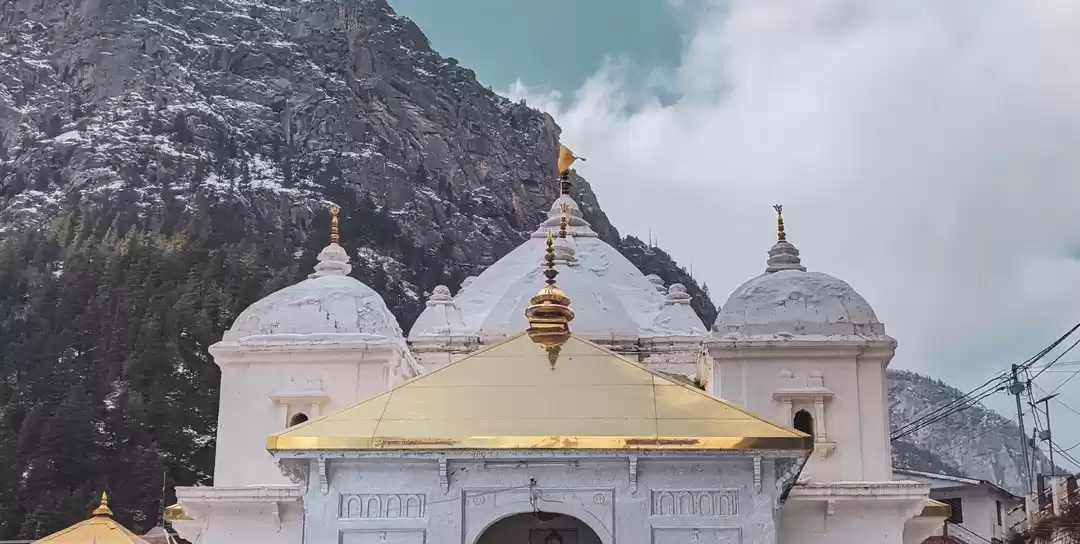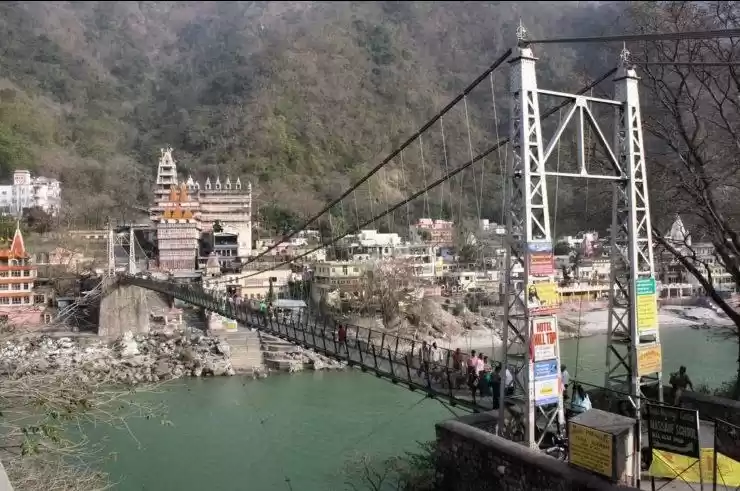
The spiritual and austere town of Rishikesh located in the Sivalik Hills, foothills of Himalayan Garwal ranges reminds me of this beautiful song from a Bollywood movie.
Mann pawan ho ganga mein doobe nahayein
Mann ravan ho jo lehron mein tune bahayein
Heart is purified by taking a dip in Ganga
Heart flows away all the bad into Ganga

RamJhula
The majestic Ganga originating at Gaumukh in Gangotri streaming, gurgling all through the Sivalik hills to the Rishikesh forms the major attraction of Rishikesh. The pristine waters of Ganga, though shimmering in the hot sun in the months of October sends in the cold chills when one takes a dip into it.
The beauty of Rishikesh lies in its Ganga, its nature, its ashrams, and its people. The people here celebrate the essence of Ganga in the nature, and the ashrams here can give you full experience of this essence.

Though I have seen the Ganga Aarthi of Kashi, but this Aarthi is performed a bit differently. It is hosted by Swami Sukhedev Anandji, the founder of Parmarth Niketan Ashram and performed at this ashram during the sunset. The aarthi here is performed by children rather the young monks. The beauty of Ganga and the innocence of these young monks makes it more wonderful. The divine Ganga is thanked for it's givings through the melodious songs and chants. One can feel detached from the world, getting lost in the serenity of this place.

Young monks in the aarthi
Rishikesh, the yoga capital of India has a plentiful of ashrams. Parmath Niketan ashram is the most beautiful ashram. It is popular among the foreign visitors. Early morning yoga acts are very usual here. It blesses us with many health benefits. Different yoga are taught in the ashrams.
Gita Bhawan is another famous ashram here with almost 1800 rooms which can be availed for free of cost. The poems or verses of Bhagavad gita are written on the walls of the ashram, hence the name, which makes it strikingly different. Provided with the basic amenities one can stay there as long as one wants. Beside the ashram, there is book store owned by Gita Press, Gorakhpur which is famous for religious books at low cost. I brought the holy Srimad Bhagavadgita which I would probably read it soon. In the ashram there are plentiful of Himalayan plants grown including rhododendrons, bramha kamal, rudraksh to name a few.

Rudraksh (the tear drop of lord Shiva ) is a famous seed found in Himalayas used as prayer bead by the devotees. There are mainly 14 types of rudraksh beads available, of them Ekmukhi rudraksh is the most powerful and most sought after bead. It has a tremendous medicinal value. Improves ones health and the overall being. These rudrakshas are named by number of their faces, starting from Ekmukhi, Dwamukhi till 14 mukhas. The size decreases as we go further with Ekmukhi being the large one. As we go deep and higher into the Himalayan ranges we can find these rudrakshas with lesser faces. Ekmukhi rudraksha is most difficult to find, its tree takes a lot of time, specifically decades to grow and are found deep in the Himalayan ranges.

Apart from the famous Rudraksha, there is another type of bead, origin of which actually mesmerizes me. Sphattik crystals are formed under the harsh cold and windy conditions of Himalayas. The ice between rocks freeze to that extent that they start forming clear crystals, looking like glass. These crystals are then made into the bead and wore. These Sphattik crystals also known as clear quartz (remembering inorganic chemistry of school?) are a good conductor of heat, so wearing them keeps our body cool and relaxes us.
Finally, the street food of Rishikesh enthralled our taste buds. It would make your mouth watery too.

Though I m not much into religious things, I got this perspective while traveling Rishikesh with my grandmother. I was very glad knowing the rich heritage of Rishikesh. If the trip was with friends, I would have just had only the adventures sports, camping etc, would not have spent so much time in other things. It does really matter whom you travel with. It was knowing the things from my grandmothers perspective.






























